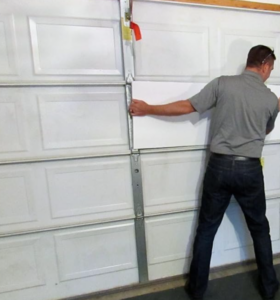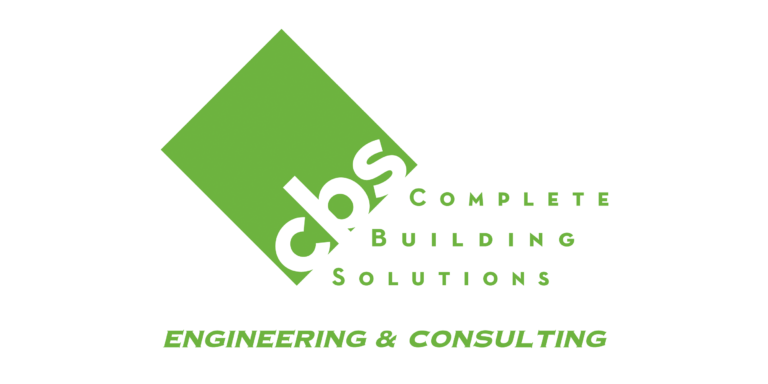Foundation repair…do those words sound daunting? You are not alone.
Foundation issues can absolutely devastate the structural integrity of a building if left unattended. However, the issues that can present themselves are vast; some repairs may be more serious and costly than others.
In many scenarios, the foundation does NOT need to be ripped out and can actually be repaired by a professional foundation repair company. Phew!
If you are suspicious of foundation issues on your property and would like to know how to spot these and determine a foundation repair plan, read on.
Signs of foundation problems-
There are signs, internally and externally, that can give you some clues about your foundation’s condition. I’ll list these out below:
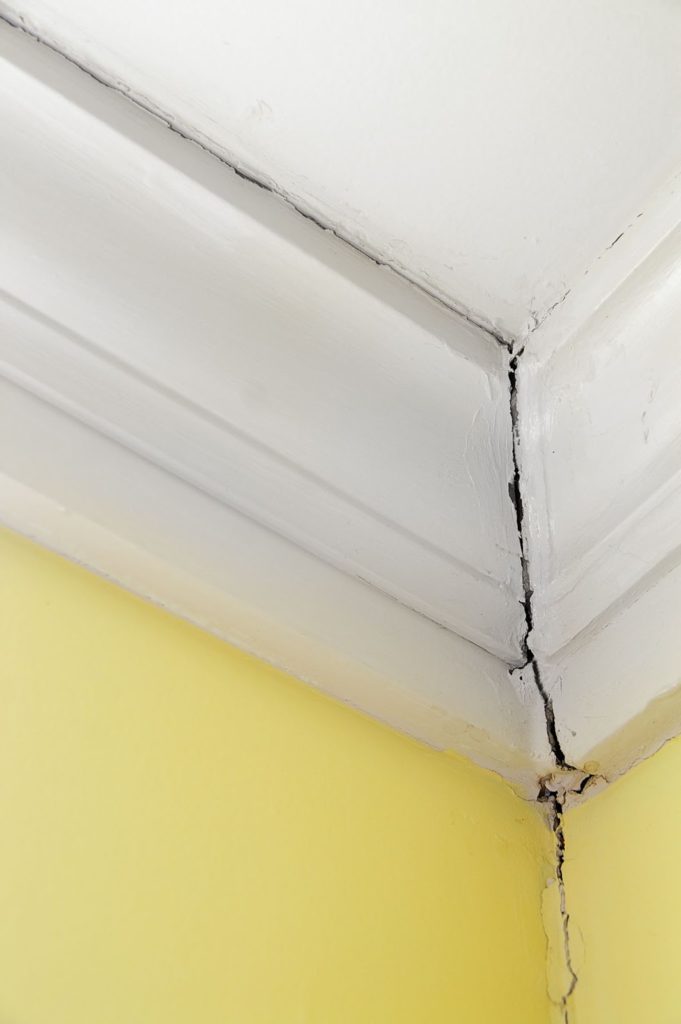
Interior signs of possible foundation issues:
- Sticky doors and windows
- Uneven floors
- Cracks in floors or ceilings
- Severe settlement
- Sagging floors
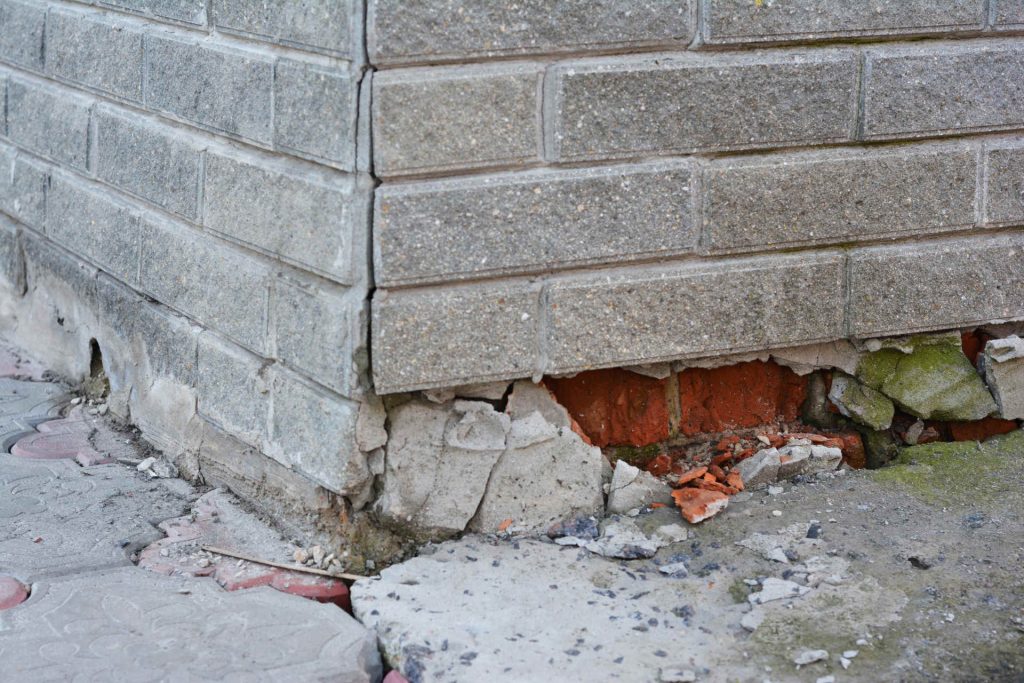
Exterior signs of possible foundation issues:
- Cracked foundation
- Crumbling foundation
- Bowed foundation walls
- Gaps around windows or walls
- Stairs pulling away from the building
- Foundation sinking
- Foundation upheaval
- Water sitting around the foundation
Keep in mind, not all of these “warning” signs mean you definitely have a foundation issue; not all foundation cracks are concerning. For instance, most cracks under ¼” in size are NOT a structural concern. However, it’s not a bad idea to have a structural engineer take a look and make suggestions.
This leads us to our next topic.
Are foundation cracks normal?
Foundation cracks should NOT be considered normal, but are definitely common. Also, not all foundation cracks are created equal. We’ll run through a few types of foundation cracks that we see regularly.
Vertical foundation crack-

Cracks, such as the one pictured above, are probably the least threatening. This particular crack is very small. However, if it were to grow larger, it should be repaired by sealing it with a water-resistant epoxy or polyurethane injection.
Also, cracks don’t just appear; there is a reason for their existence.
Most likely, a better water management plan needs to be implemented on the property to avoid future cracks. For instance, gutters must be cleaned, downspouts should be installed that extend 5 feet from the home, and all water should be flowing away from the house (not sitting around the foundation). Minnesota code calls for a positive slope to bring water away from the foundation. Ideally, a minimum of 5% slope 10 feet away from the foundation wall would work.

If you live on a hill, it may be a good idea to speak with a structural engineering firm (one that understands how water management works) or another professional specializing in this area.
Horizontal foundation crack-

Horizontal foundation cracks are definitely more serious. They can indicate ground force pressure on the foundation walls, which could lead to foundation wall bowing.
So, why is this pressure occurring? Well, one answer could be that incorrect soils were used for backfilling. If the wrong soils were used, such as clay, moisture could be getting trapped in the soil around the foundation. All that water alone could cause more pressure on the foundation walls. Now, add some freezing temperatures and you have a perfect recipe for foundation cracking and bowing.
This foundation crack will definitely need some repairing. If you see something like this in your home, it would be a good idea to consult with a structural engineer. The structural engineer could examine the structural integrity of the foundation and provide you with repair instructions (be sure to ask your engineer ahead of time if they have knowledge in this area, not all do) or a possible referral for a foundation repair contractor.
A professional can gauge the severity of the situation. A possible worst case scenario (not the only scenario), backfill soils come out; best case scenario, some epoxy and a good water management plan could do the trick.
Diagonal foundation crack-
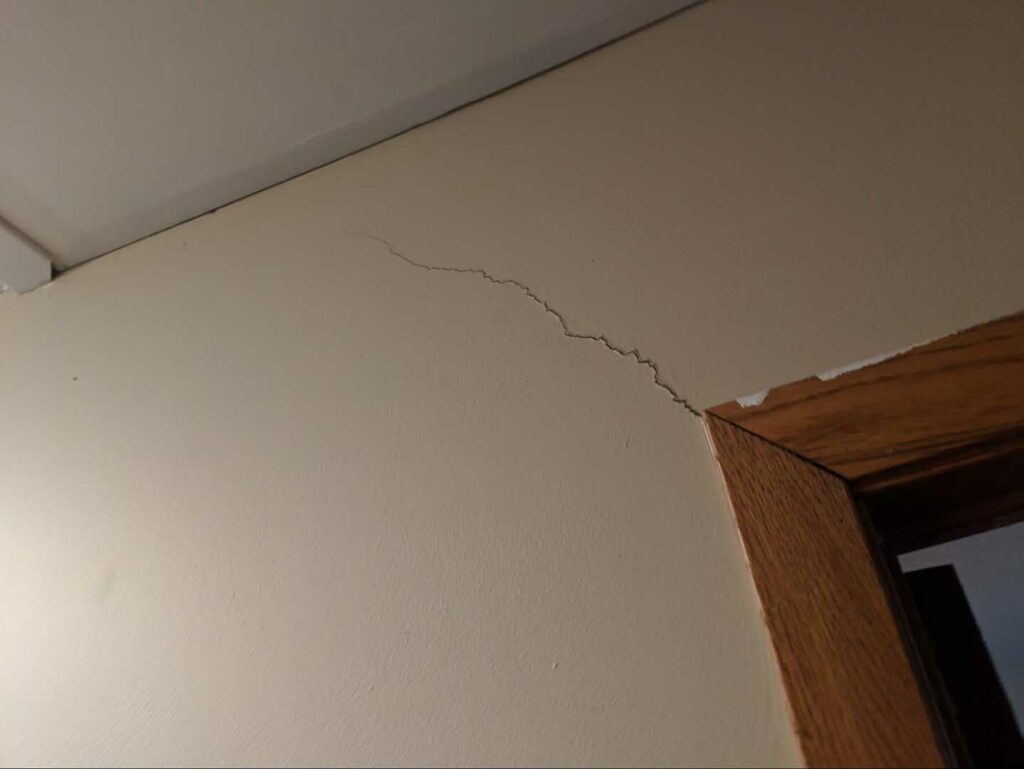
Diagonal foundation cracks are not typically dangerous if they are taken care of properly. They are, however, a sign of foundation stress. This stress could be thought of as horizontal and vertical tension which in itself could cause structural damage to a home.
What does this mean?
Well, when one area of a home “settles” faster than another area, these types of cracks could occur. To learn more about settlement cracks, listen to a recent podcast by Structure Tech Home Inspectors featuring our owner, Rob Vassallo.
What about repairs? These types of cracks are repaired similarly to that of vertical cracks. Again, it’s always good to have a full foundation assessment done to ensure there are no large issues behind foundation cracks. For instance, professionals will examine the foundation as a whole and also inspect how many cracks are present and what angle these cracks are presenting. Diagonal cracks presenting as 30-75 degrees may be indicative of a foundation needing some stabilization.
Basement floor crack-

Basement floor cracks are a complete nuisance aesthetically. Atleast, the small ones are.
Cracks over ½” or more start to become more of a problem. It’s important to have a professional determine why these cracks are occuring. It’s possible that the cracking could be related to a foundation wall experiencing severe settlement from soil pressures.
If this is the case, a possible foundation repair solution could be a soil tie back reinforcement system. Then, the concrete floor could be foam jacked to fix the current cracking and prevent further moisture issues.
Again, these types of problems should be examined by a structural engineer.
Stair-step foundation crack-
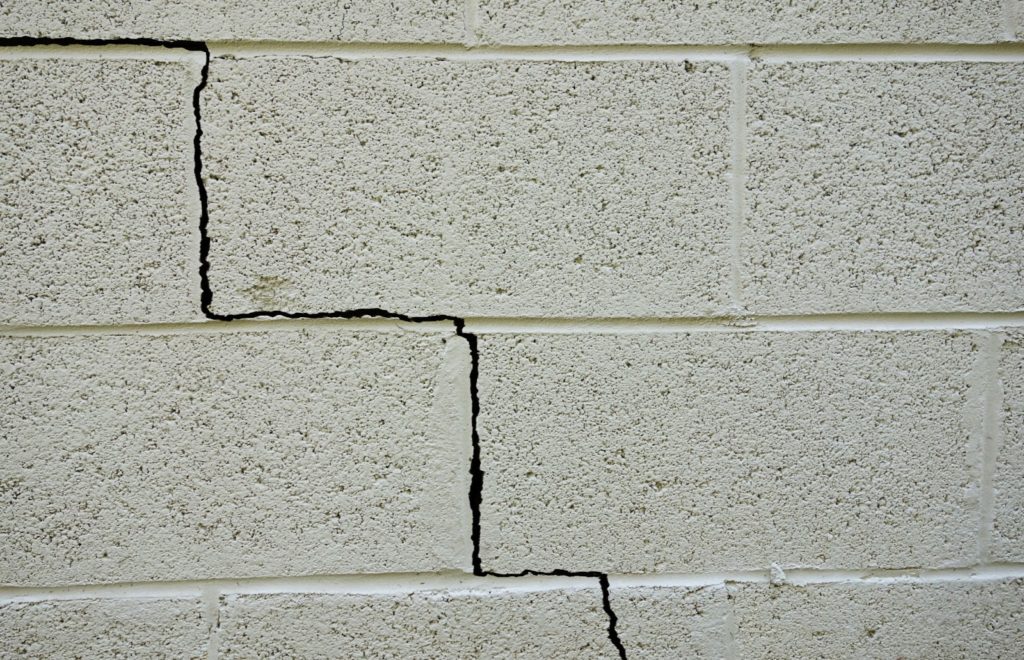
The stair-step crack should make you very concerned because it is often the most threatening to a building’s structural integrity. They are caused by settlement occurring at different rates throughout a structure, most likely from the expansion and contraction of soils surrounding the home. In some cases, repairs are completely possible. As always, hire a professional to determine the severity of your stair-step crack.
What causes foundation issues?
We could go into the specifics of every foundation issue out there. However, at the root, there is typically one main cause….WATER.
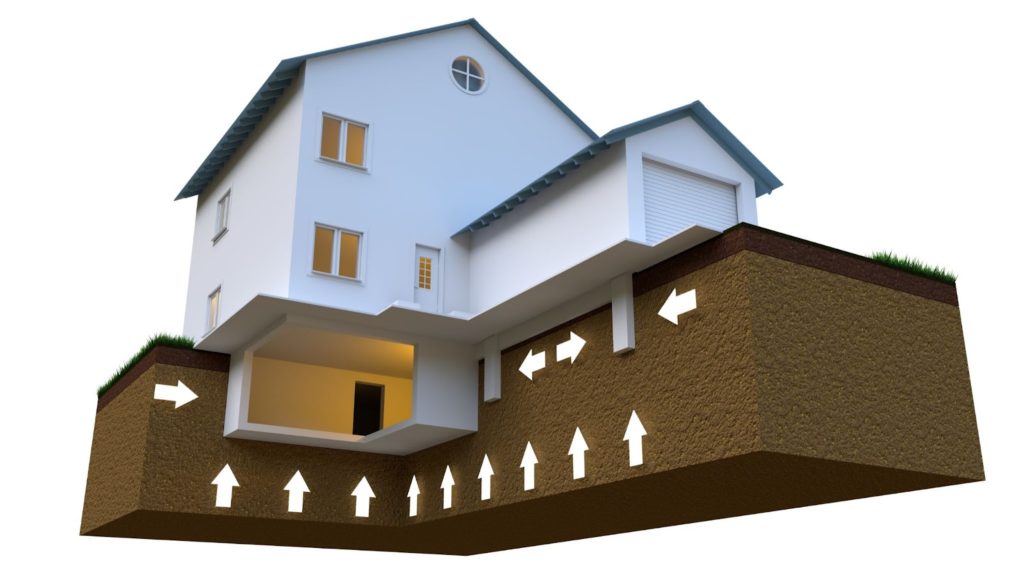
Water is enemy #1 to foundations. It can damage your foundation in a few ways.
- Hydrostatic pressure: This is the pressure exerted by water upon your foundation walls. Think about it, water weighs about 60 pounds per cubic foot. If your backfill soils are saturated to the max, your foundation could be experiencing thousands of pounds of hydrostatic pressure. Not only will this water find its way into your basement, it could also be responsible for causing structural issues.
- Freeze-thaw cycle: The freeze-and-thaw cycle causes problems for foundations because of frost heave. Frost heave, like it sounds, occurs when water freezes and causes heaving of concrete around it. To break it down a bit, if your backfill soils are saturated with water, that water will freeze when temperatures drop low enough. This means the soil will expand and put pressure on your foundation walls. When the temperatures go back up, the water in the soil will thaw and the soil will move away from the walls causing the foundation to move and shift. This is how cracks, bowing, instability and moisture intrusion in basements can happen.
Now that you understand a few of the mechanisms behind foundation problems, let’s talk about what makes your foundation susceptible to hydrostatic pressure and frost heave.
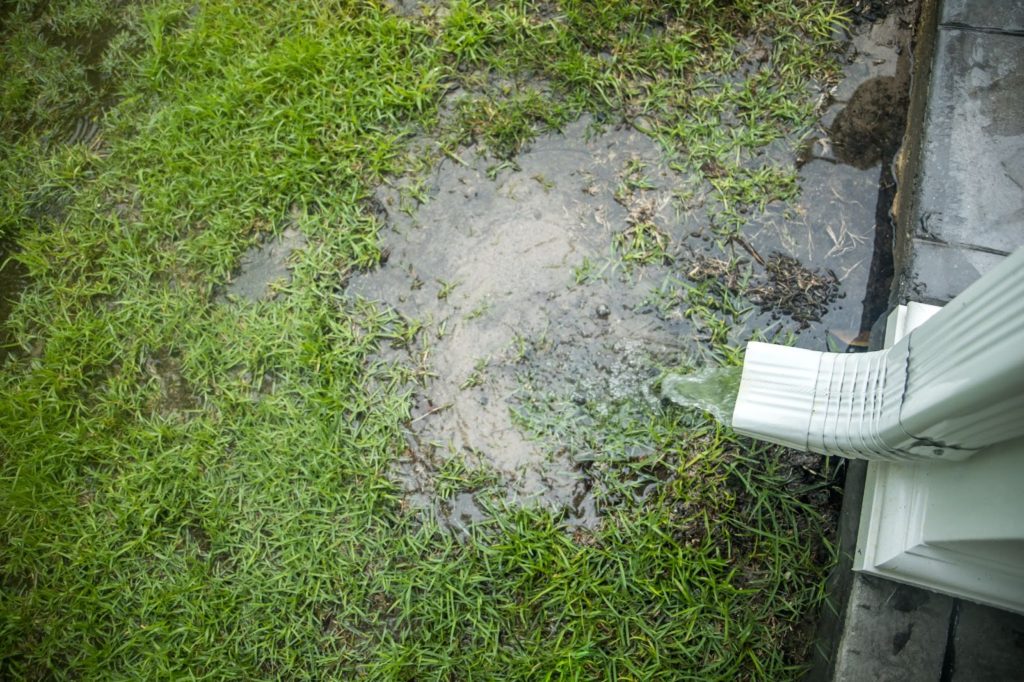
Here are some common issues
- Poor grading & slope
- Poor plant bed designs and water traps
- Large tree roots growing too close to your foundation
- Lack of a functioning gutter system with downspouts and extensions
- Expansive clay soils
- Improperly compacted backfill soils
- Underground springs
- Low elevation stormwater issues

If you would like to know more details about the list above, click here. There are two bullets on the list above that I think are too important to skip talking about.
Let’s jump into these next.
How Soils Affect your Foundation & What Can be Done-
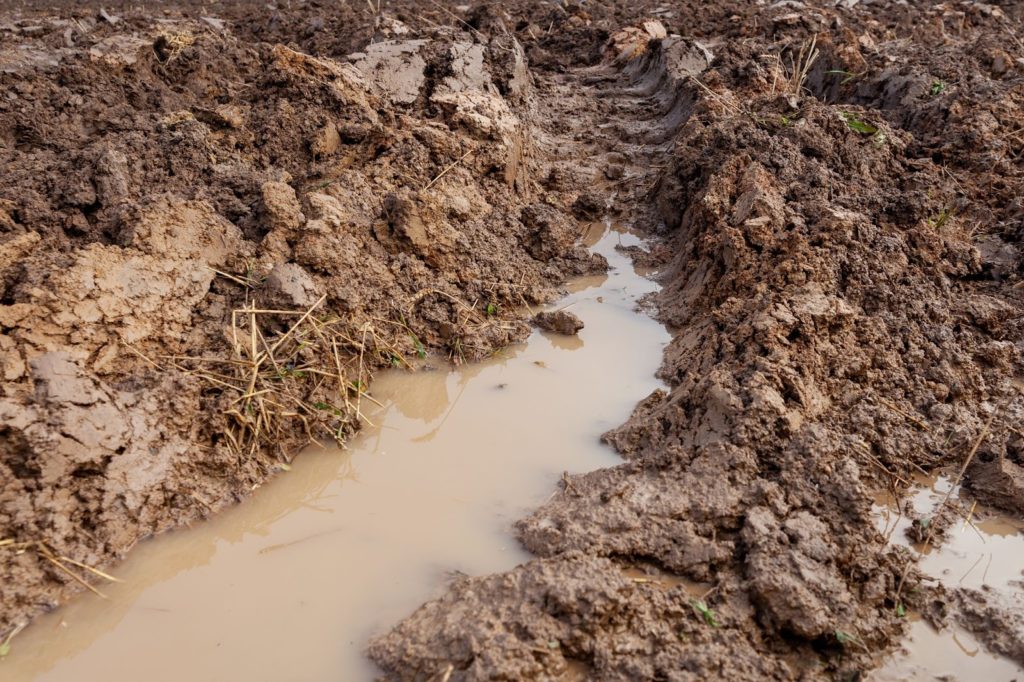
The two bullet points from above that we have to talk about are: expansive clay soils & improperly compacted backfill soils. Both the type of soil a structure is built upon and how the soil was compacted matter when it comes to foundation integrity.
Let’s talk about this.
The worst type of soil to build upon is clay soils. These soils rapidly expand and contract and hold a TON of moisture.
Don’t believe us? Check out the video below.
As we mentioned above, water is your foundation’s enemy. The last thing you want is clay soil sitting around your foundation walls sucking up water. This causes a lot of hydrostatic pressure on the foundation walls but will also leave your home vulnerable to cracking and bowing from frost heave (if you live in the north). It’s for those precise reasons the soil correction was performed in the video above. After the work was done, the settlement and heaving issues went away.
Soil corrections are quite costly, but they can be done. Essentially the cohesive clay soils would need to be removed and replaced with a bituminous soil such as recycled asphalt and concrete (con-bit), red rock gravel or equivalent.
It would not be wise to perform a soil correction without hiring a seasoned expert to head up the project. Execution and installation are just as important as the soils themselves. Soils must be compacted correctly or you will still end up with unwanted settlement. Talk about a waste of money.

One last note on this topic, frost heaving can do some real damage to garage aprons, driveways and walkways making for a serious tripping hazard.
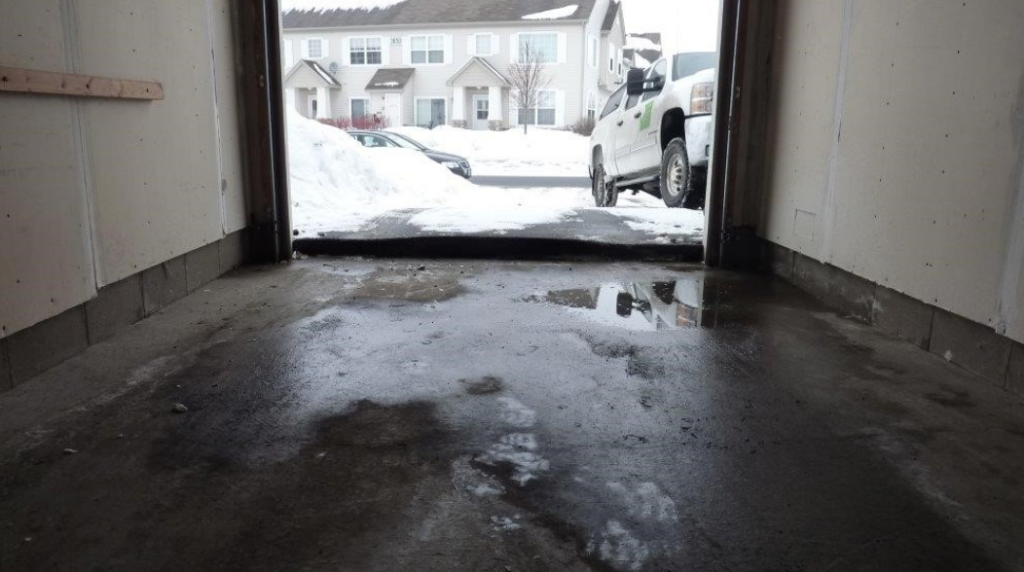
Concrete Slab Foundation Repair Methods-
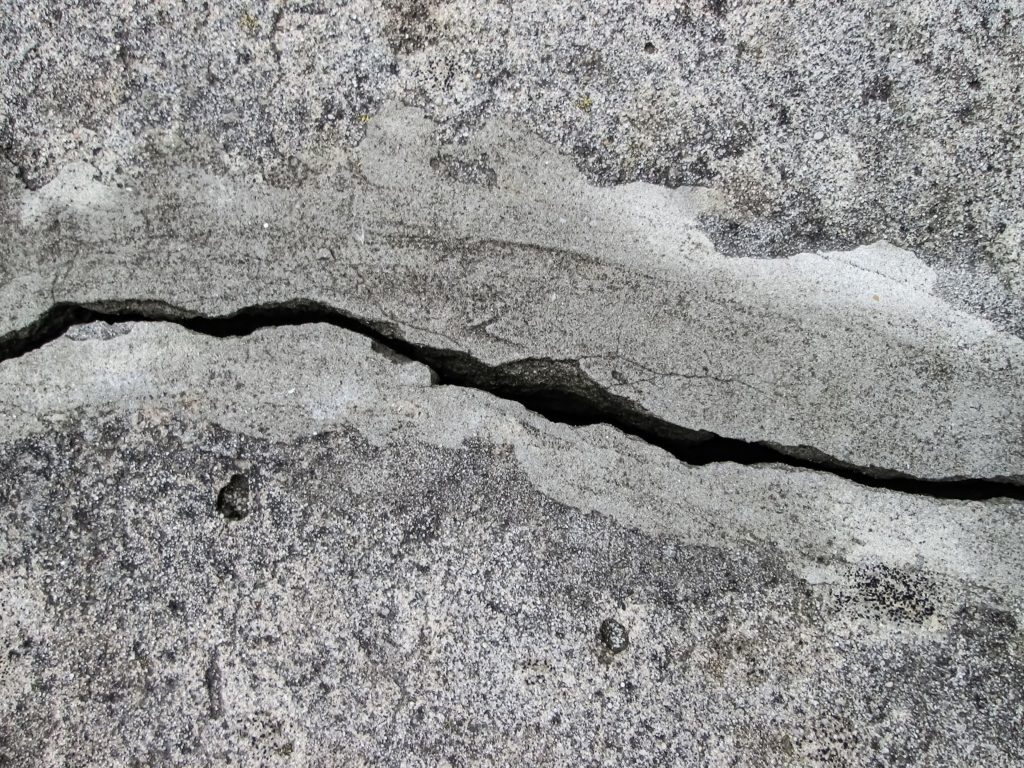
If your concrete slab has experienced issues, there are repair options available. The two most popular options that come to mind are: slabjacking and hydraulic jacking (piering).
Slabjacking (mudjacking)-
Slabjacking saves you from having to replace your concrete if heaving/sinking has occurred.The process involves pumping a grout mixture or foam beneath your slab which lifts the concrete in only a few hours. How does this work? Well, strategic holes are drilled and the grout mixture is pumped into them. Voila. Your slab has been fixed for about ⅓ the cost of the alternative (concrete replacement). You have also saved yourself from the enormous headache that comes with replacing a concrete slab. Moving furniture, cleaning up a giant mess and loud noises do NOT come with this package.
Hydraulic jacking (piering)-
This repair method is a bit more involved. It entails excavating around the home in order to install steel pilings beneath the foundation. These pilings will then be raised hydraulically until the foundation is level. Essentially the pilings work as your new foundation. This option is typically used for larger commercial projects and is more expensive than slabjacking.
Keep in mind that both options above fix the damaged foundation, but they do NOT fix the moisture intrusion issues that caused the problem. A water management plan must be incorporated in order to drive water away from the foundation.
Bowing Foundation Wall Repair Methods-

First off, if you have a bowing foundation wall it’s important to have a structural engineer analyze the situation. The structural engineer can provide you with both an analysis and the correct foundation wall repair method needed to make your building structurally sound.
Let’s talk about some of the options.
Carbon Fiber Straps-
Carbon fiber straps are most contractors preferred repair method because they are easy to install and the cheapest option.The straps themselves are sealed with an epoxy onto the wall and then fastened at the top and bottom. Depending on the situation, straps will be placed approximately every four feet on the wall. Homeowners do not mind carbon fiber straps because of the price and convenience, but they can also be hidden with paint for aesthetics. Unfortunately, they are not a good choice for any wall that is bowing in more than 2 inches. There are limitations.
Wall Anchors-
If it’s been determined that your wall is bowing more than 2 inches, your engineer may suggest wall anchors. Excavations will be made a distance from the foundation wall and a steel plate will be put inside each dig. Then, a corresponding hole will be drilled through the foundation wall. A threaded rod will attach to the steel plate in the ground and to a steel plate that is placed through the hole in the foundation wall. Tension is created which should support the wall. This method is more expensive because of the excavation and material (steel) requirements.
Helical Tiebacks-
One final option is the secure but expensive method of helical tiebacks. Installation is easier than anchors because it can all be done from inside the basement. A plate is attached to the basement wall and a screw-like shaft (14-21 feet long) is drilled in a downward angle towards the outside earth. Each individual tie back costs about $1,600-$1,700 for perspective.
Again, the above three options do not fix the issue that caused the wall to bow, water problems. You must address this force of nature in order to stop further issues from perpetuating.
Is it possible to straighten my foundation wall-

The options we discussed above to repair foundation walls don’t actually make the foundation wall straight They simply strengthen and support it. Oftentimes this is acceptable to a homeowner.
However, there are scenarios when a property owner prefers the wall be strengthened but also straightened. This is possible, it is just costly.
It would require excavation around the foundation and the use of hydraulic jacks within the basement to move the damaged wall back to plumb. Keep in mind, the wall still needs the support of carbon fiber straps (sometimes other methods).
Repair methods for foundation wall cracks-

After a structural engineer has inspected the foundation, they may call for a foundation wall crack repair. Unless you know what you are doing, a foundation repair company can help you with this. Typically, a structural engineer would call for the cracks to be filled with a concrete epoxy. Some areas, if they show small amounts of deflect off the block, may even need a concrete mortar mix to fill any voids. Click here for a step by step explanation of this.
How to know when to call a foundation repair company-
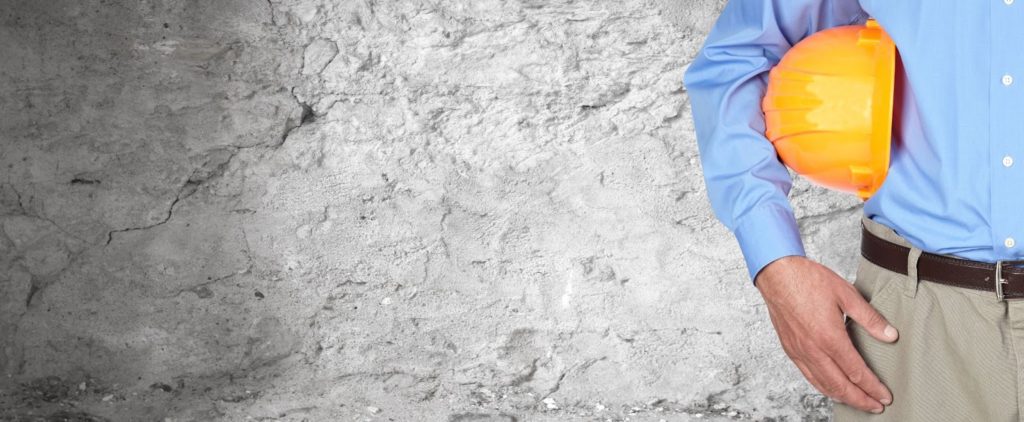
Since your foundation literally holds up your house, it’s always a good idea to make sure it is structurally sound. This can be done by first hiring a structural engineering firm to perform a foundation inspection. Most engineers can provide you with a scope of work which can be given to a contractor of your choosing.
So, to answer the question, talk to your engineer first. Find out specifically what is wrong and what repairs need to be made to reinstate integrity. Once you know the structural requirements, it is time to call your foundation repair company.
Can I repair my foundation myself?
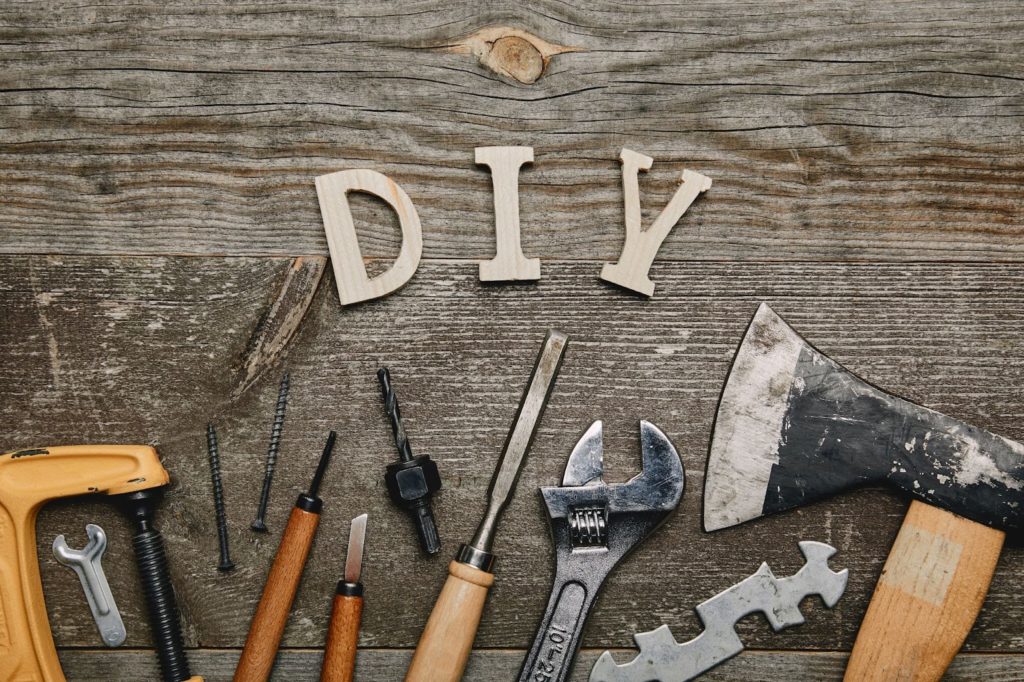
If you have the knowledge and experience, fixing foundation wall cracks should be no problem for you. However, anything beyond this typically requires a foundation repair contractor. Your home sits upon the foundation and could literally fall down if mistakes are made.
Does insurance cover foundation damage?

Homeowners insurance will typically cover foundation if damage has occurred from an “event”. See list below to get an idea of what an event could be qualified as.
- Lightning or fire
- Windstorm
- Damage caused by aircraft
- Explosions
- Riots or civil disturbances
- Damage caused by vehicles
- Vandalism
- Falling objects
- Volcanic eruption
- Collapse weight of snow, ice, or sleet
- Water damage from plumbing, heating, or A.C. overflow
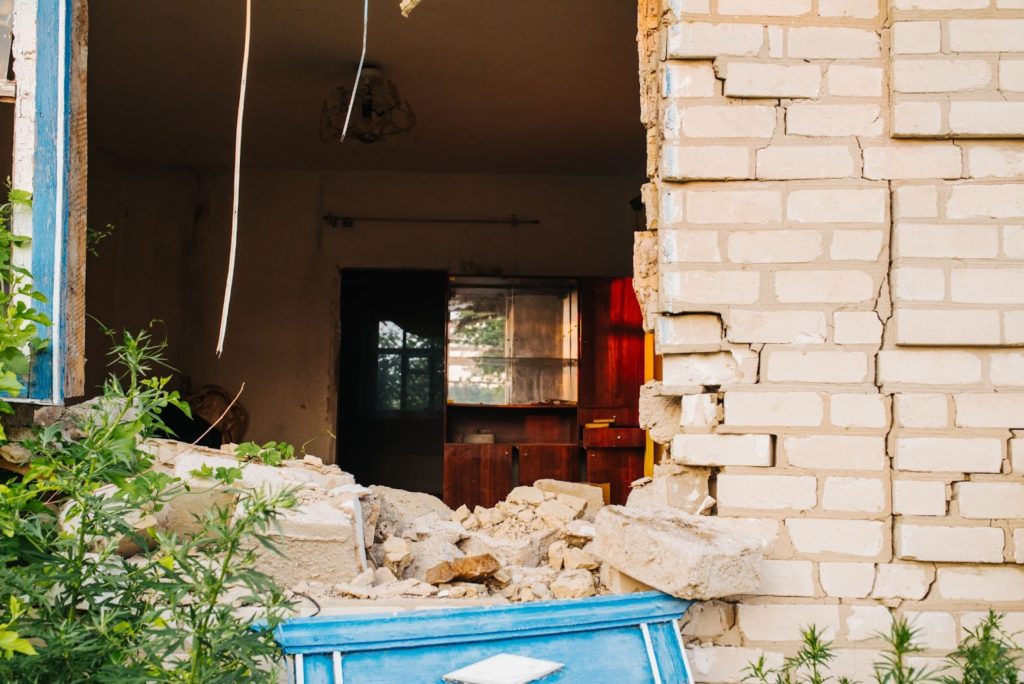
Keep in mind that most insurance companies won’t cover earthquake or flood damage claims. They also typically don’t cover the following:
- Natural settling, cracking, shrinking, bulging, or expansion of the foundation
- Earthquakes or Flood
- Pressure from tree roots
- Faulty construction
How much will foundation repairs cost?

Foundation repair costs are another huge concern for property owners; and for good reason…it’s typically not cheap.
This is why it’s important to stay on top of your foundation issues. If you are noticing cracks or other signs that your foundation is failing, pay the money for a structural engineer inspection so you can determine and implement a solution before the problem becomes impossible to resolve.
The solution could be as simple as fixing the grade around your home and filling your foundation wall cracks with an epoxy. This may cost you under $500 to fix.
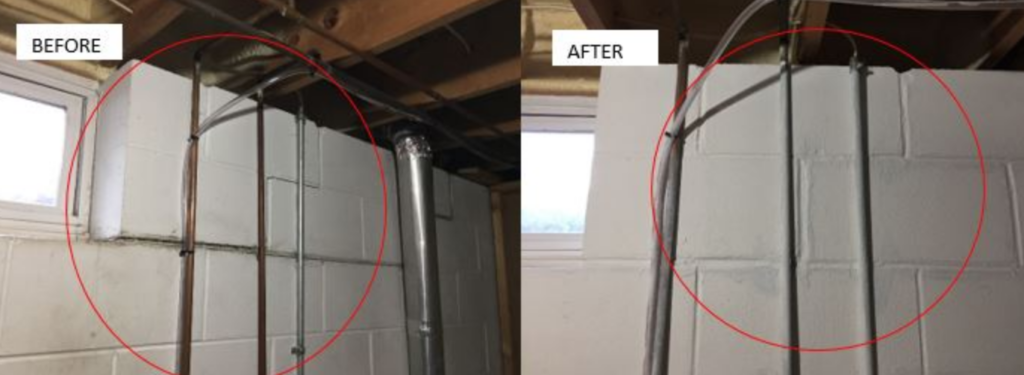
If larger problems are at hand, the foundation repairs could cost upwards of anywhere from $1,800-$14,000.
For example, helical tiebacks cost approximately $1,600-$1,700 per tieback. Depending on how many tiebacks your foundation requires, this could add up.
Carbon fiber straps may cost about $600-$700 per strap. Again, how many straps will vary. Most structural engineers will call for a strap to be placed 4 feet apart.
Wall anchors cost about $800-$1000 each. Structural engineers may call for an anchor to be installed every 5 feet along a bowing wall.
Mudjacking could cost anywhere from $300-$2,400.
Hydraulic piers cost anywhere from $1,300-$2,400 each depending on if the piers can be dug by hand or machine. Most homes need about 8-10 piers costing anywhere from $10,400-$24,000.
If you look at what the average foundation costs to fix, you’re looking at approximately $4,000.
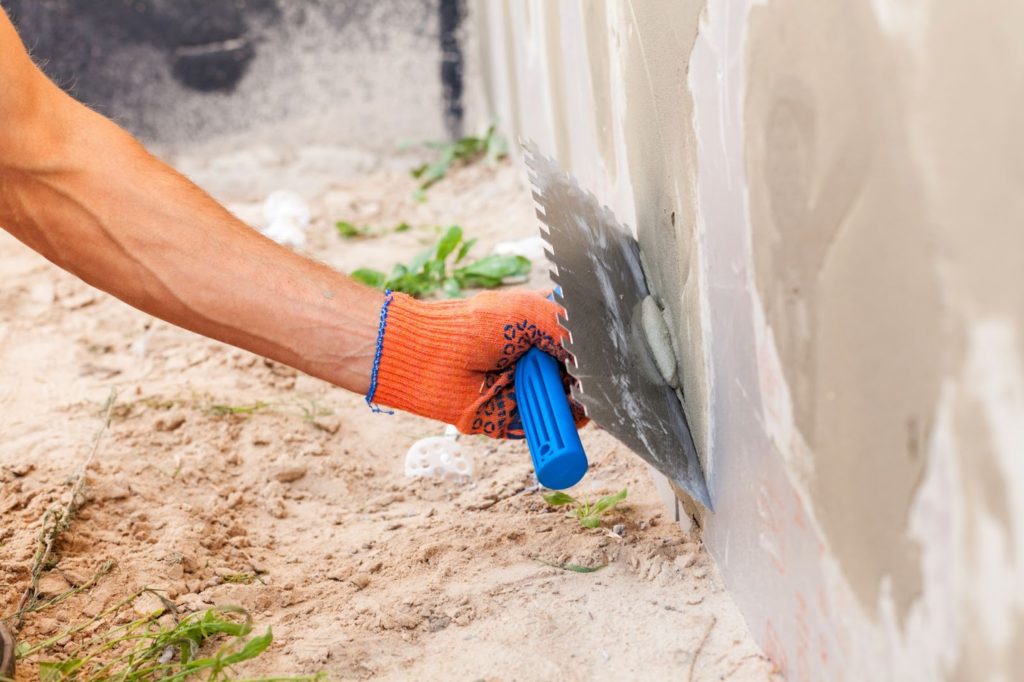
We went over the costs to fix the specific foundation issue at stake. However, we did not talk about soil corrections or other grading issues such as underground springs. These projects are excavation heavy and therefore cost a pretty penny. It’s almost impossible to give an “average” price on these because each project is unique.
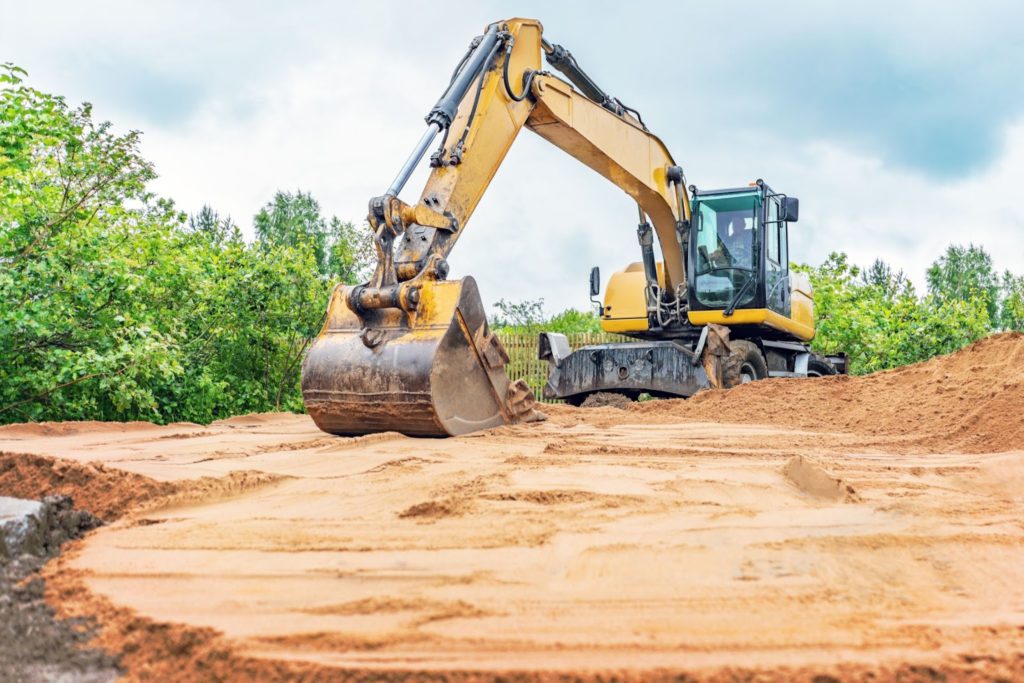
This leads us to our next topic. Is it financially advantageous to purchase a home with foundation issues? Read on to hear our thoughts on this.
Purchasing a home with foundation issues-
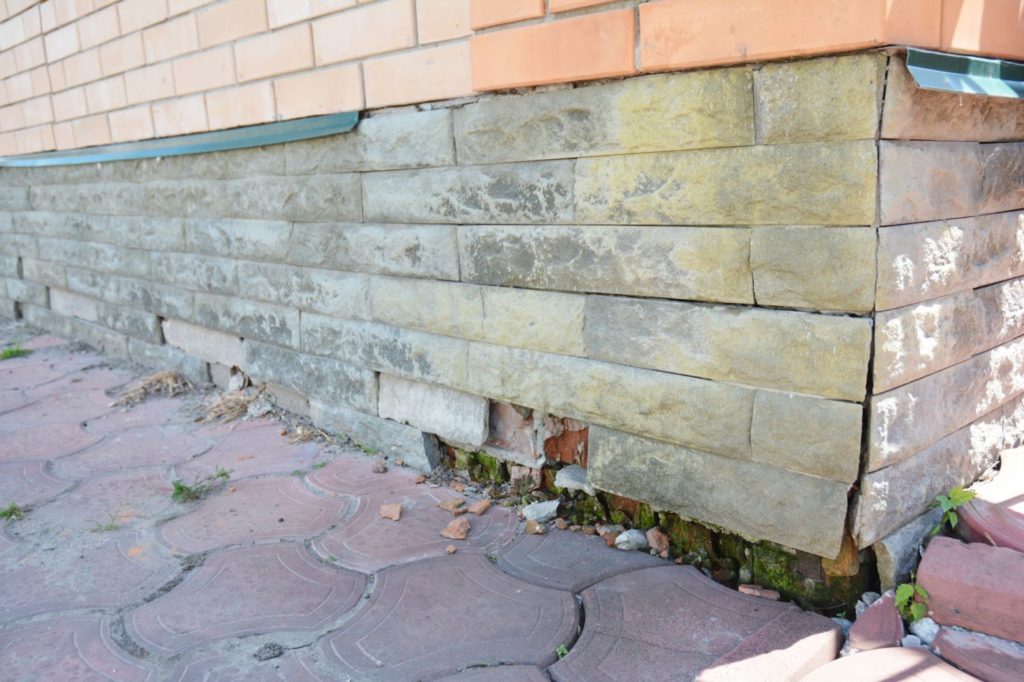
When you are considering buying a new property, it’s always important to notice if the building has “strong bones”. Ensuring the foundation is in good condition is a HUGE part of that equation. With that being said, nothing could make a home purchase transaction fall through faster than a “bad” foundation.
There are so many factors that play into this. Why is the foundation bad? Is it a simple fix? Will it require thousands of dollars in excavation costs to permanently fix the issue? Is the home located on an underground spring or at the bottom of a hill. How long has the issue been going on? How much damage has occurred?

Most people simply do NOT want to deal with the headache and financial burden that can accompany foundation problems.
To avoid purchasing a home with unknown foundation issues, always have a home inspection performed first. A home inspector will notify you if minor or major foundation issues are present. Depending on the issue, they may even suggest a structural engineer foundation inspection.
We hope this blog has been informative about the repair options for foundation issues. Please feel free to reach out to us with any additional comments or questions at 763-544-3355.

